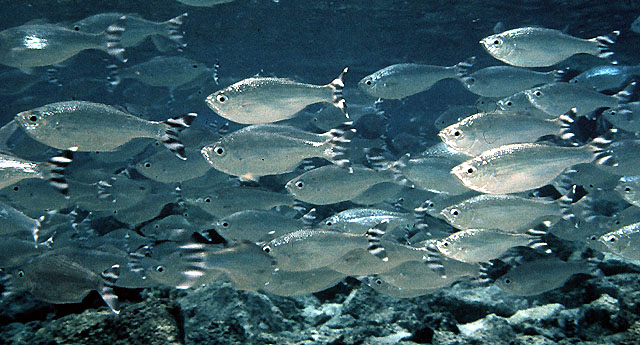| Kuhliidae (Aholeholes) |
| 40 cm SL (male/unsexed) |
|
reef-associated; brackish; marine; depth range 3 - 18 m |
| Indo-Pacific and Eastern Pacific: Red Sea and East Africa to the eastern Pacific, north to southern Japan, south to New South Wales and Lord Howe Island. Absent from Easter Island, Pitcairn, Marquesas, Hawaiian Islands and Johnston Island. |
|
Dorsal spines (total): 10-10; Dorsal soft rays (total): 10-11; Anal spines: 3-3; Anal soft rays: 10-12. Preorbital serrae 11-14; body depth 2.75-3.05 in SL; caudal concavity 1.85-2.6 in head length; Silvery, the front of snout and chin blackish; caudal fin white with a median dark stripe and two broad oblique black bands across each lobe, the lobe tips white; a dusky band in outer part of soft portion of dorsal fin except for white tip of high anterior part. Juveniles (2.0-3.0 cm SL) have the median and outer black bands in the caudal fin lobes, but the middle band is represented only by a black spot basally in the outer part of each lobe (Ref. 41640). |
| Tightly packed schools occur along the reef margin of rocky shorelines, from just below the breaking surf to a depth of a few meters. Young commonly in tide pools (Ref. 41640). Sometimes found in estuaries but reported to never enter freshwater environments (Ref. 41640). Feeds on free-swimming crustaceans and small fishes at night (Ref. 5213). Utilized fresh or dried salted (Ref. 7271). |
|
Least Concern (LC); Date assessed: 15 September 2011 Ref. (130435)
|
| harmless |
Source and more info: www.fishbase.org. For personal, classroom, and other internal use only. Not for publication.
